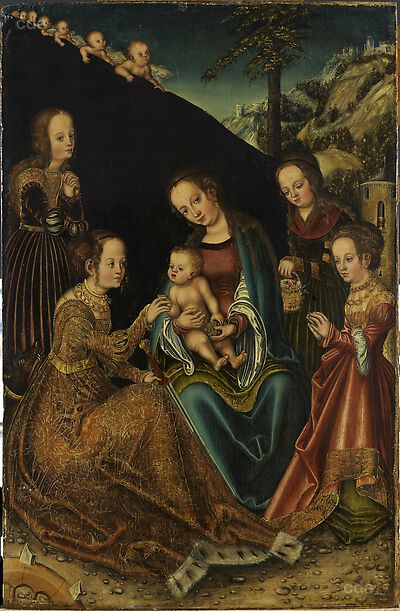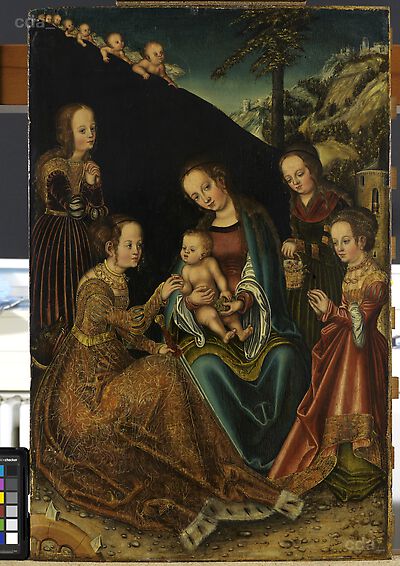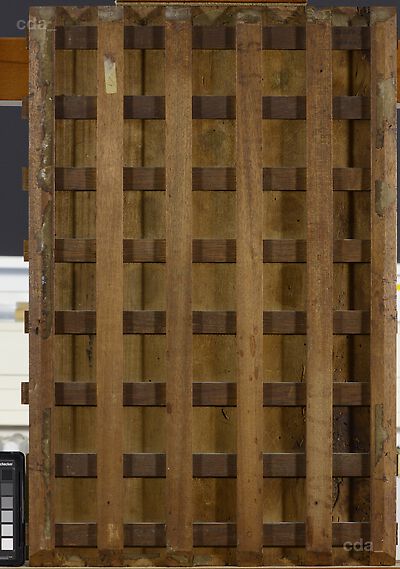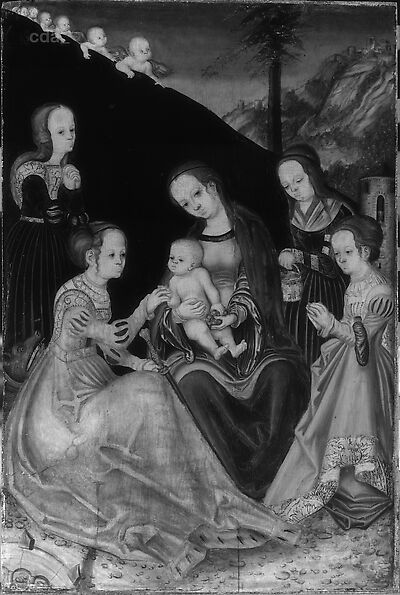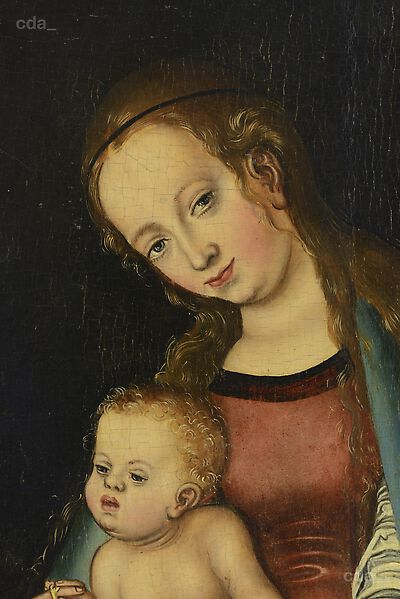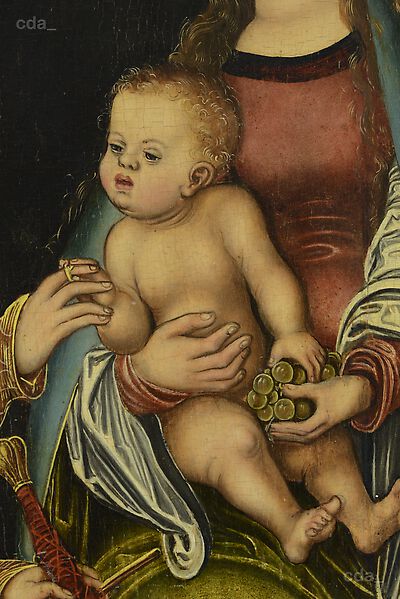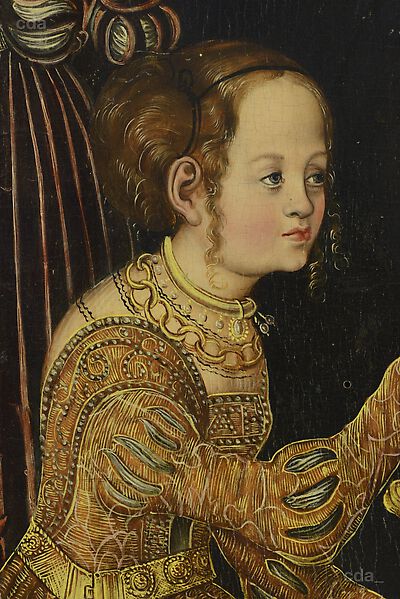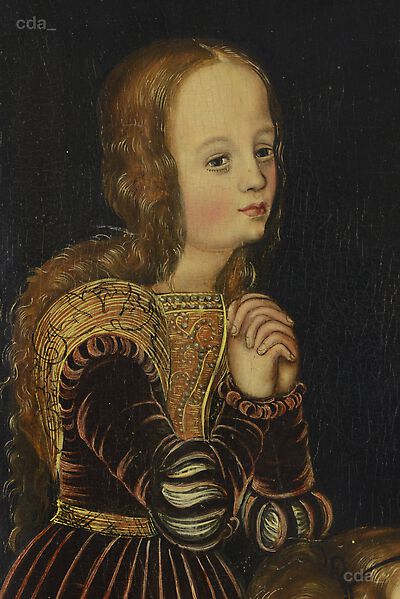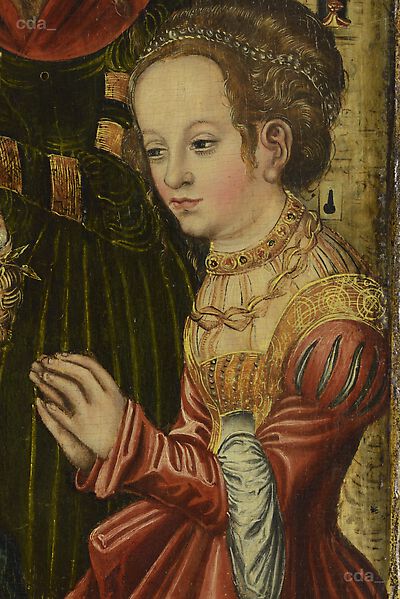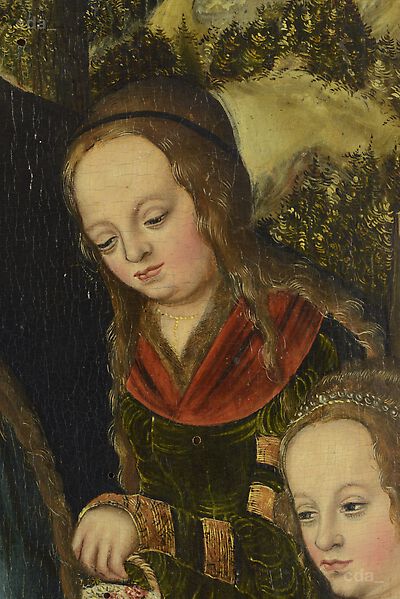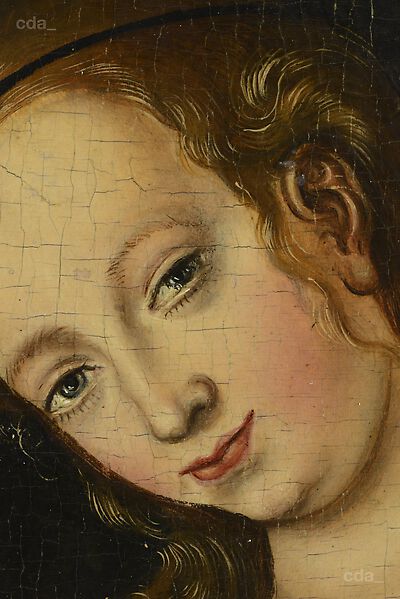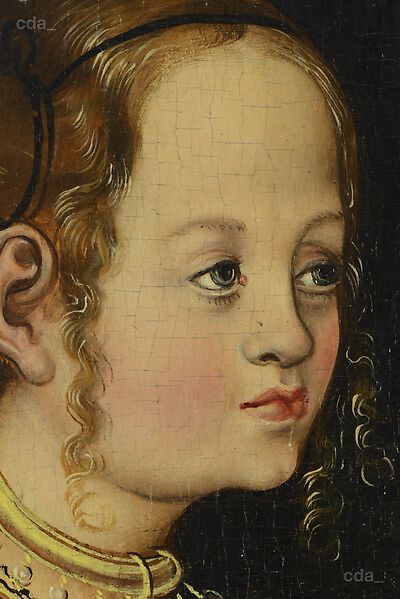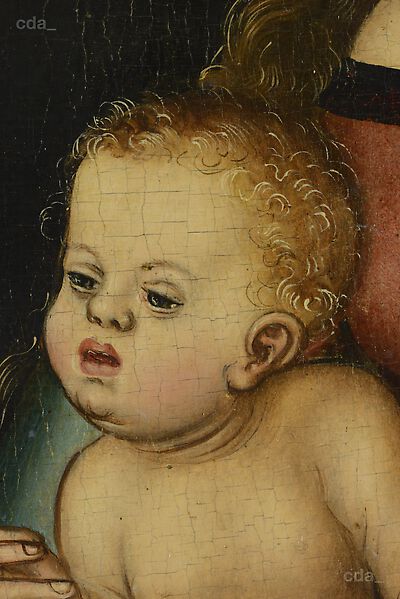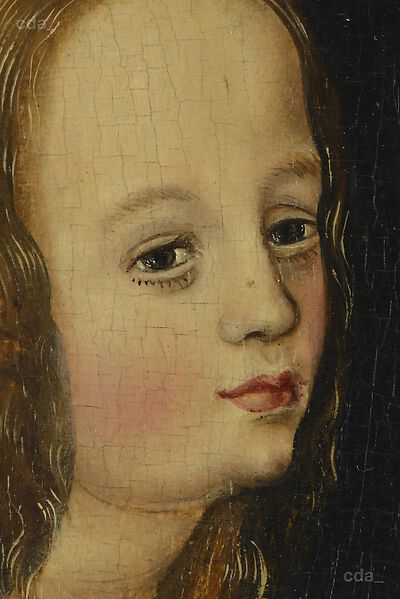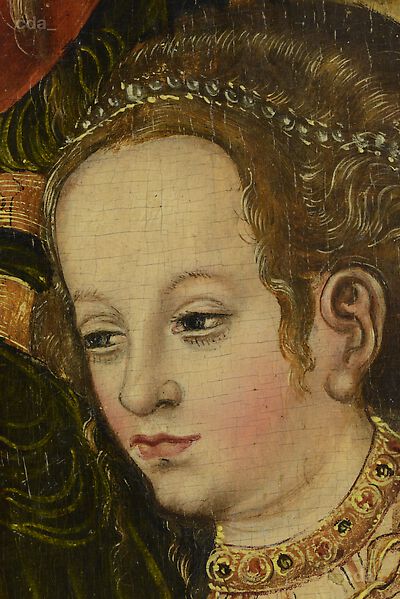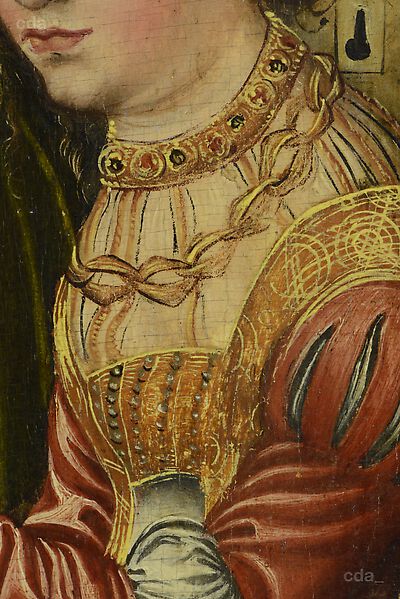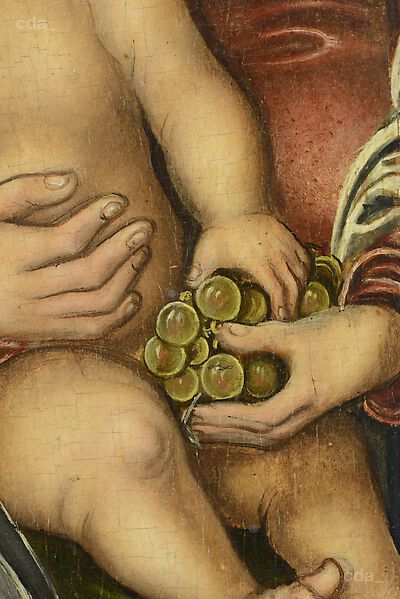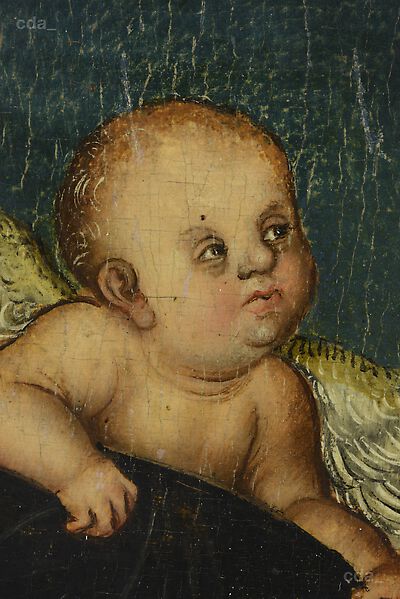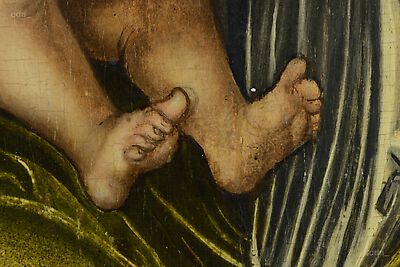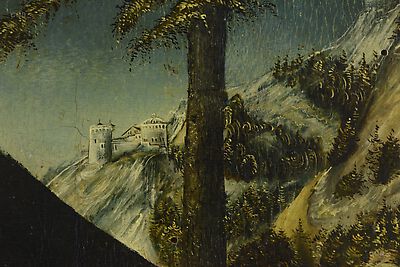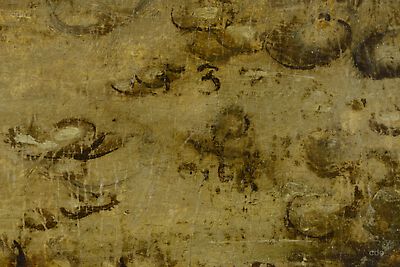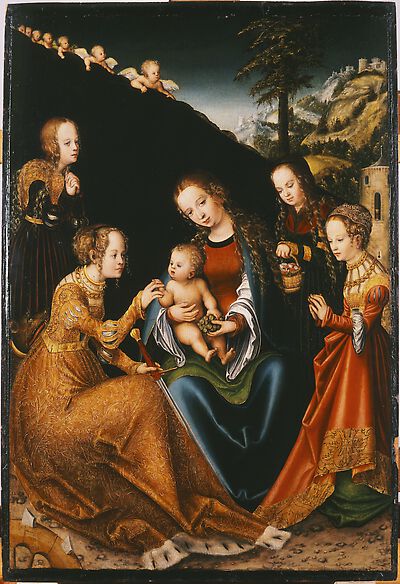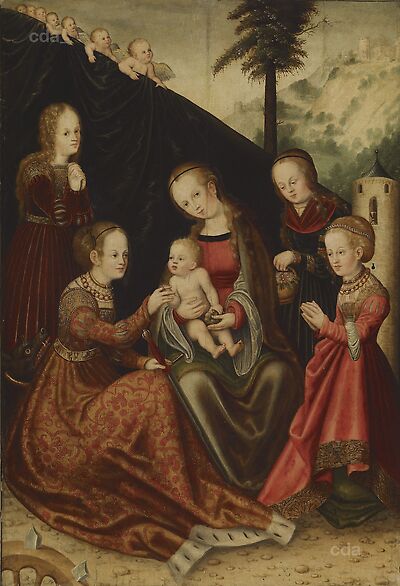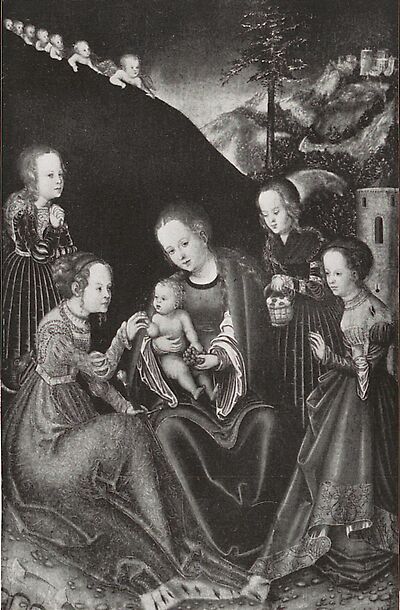- Attribution
- Workshop Lucas Cranach the Elder
Attribution
| Workshop Lucas Cranach the Elder |
- Production date
- about 1516 - 1520
Production date
| about 1516 - 1520 | [examination report Heydenreich/Blumenroth 2015] |
- Dimensions
- Dimensions of support: 61 x 39.9 cm
Dimensions
Dimensions of support: 61 x 39.9 cm
[examination report Heydenreich/Blumenroth 2015]
- Signature / Dating
Artist's insignia at the lower right: winged serpent and dated "[?]532"
Signature / Dating
Artist's insignia at the lower right: winged serpent and dated "[?]532"
(presumably added later)
[Examination report Heydenreich/Blumenroth 2015]
- Owner
- Private Collection
- Repository
- Private Collection
- CDA ID
- PRIVATE_NONE-P111
- FR (1978) Nr.
- FR-none
- Persistent Link
- https://lucascranach.org/en/PRIVATE_NONE-P111/
